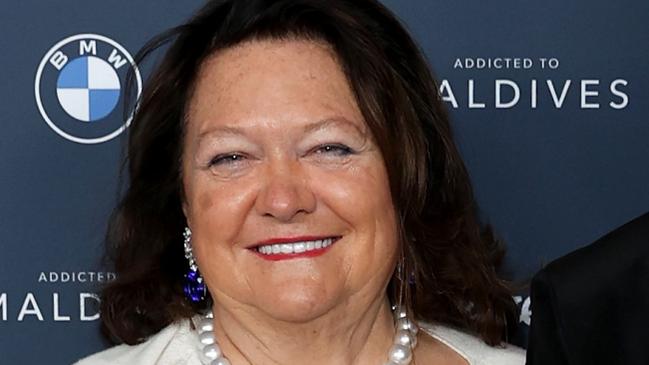Rinehart legal battle: ‘Clear evidence’ Gina knew of Wright interests
Correspondence to and from Gina Rinehart was ‘clear evidence’ that she knew Wright Prospecting was entitled to over $1 billion of assets.

The lawyers fighting for a share of Gina Rinehart’s fortune have produced a slew of documents they say show Australia’s richest person knew that the family of her father’s former business partner was entitled to interests in two valuable Pilbara iron ore deposits.
Western Australia’s Supreme Court on Thursday heard how multiple documents over several years were “clear evidence” that Wright Prospecting – the business founded by iron ore pioneer Peter Wright – should be collecting royalties from the Hope Downs iron ore mines and should hold a 50 per cent stake in the East Angelas deposits.
Wright Prospecting is suing Mrs Rinehart’s Hancock Prospecting, seeking hundreds of millions of outstanding royalties and a return of its share in East Angelas. That share is estimated to be worth well over $1bn.
Among the numerous documents mentioned by Julie Taylor SC, representing Wright Prospecting, was a letter sent by Mrs Rinehart to her father Lang Hancock in which she recalls a conversation with him in which he expressed his concerns about developing other iron ore projects in the Pilbara. Those assets, Ms Taylor said, could only be East Angelas and Hope Downs.
In the letter, which echoes correspondence cited earlier in the week, Mrs Rinehart says her father told her that the other assets were held in association with Peter Wright and that in order to develop them “we need his agreement”.
“And that would take time,” Mrs Rinehart’s letter said.
Ms Taylor also cited another letter from Mrs Rinehart to Mr Wright’s daughter, Angela Bennett, in which Mrs Rinehart said she was “extremely close” to her father until 1984 and had been closely involved in the Hancock Prospecting business. That letter included a table showing that royalties from the Hope Downs deposits were to be split equally between Hancock Prospecting and Wright Prospecting.
A memorandum sent to Mrs Rinehart by a director of Hancock Prospecting in August 1992 also outlined how Wright Prospecting would receive a royalty from the Hope Downs mines – which Ms Taylor said was “precisely the construction” put forward by Wright Prospecting in its case.
“This is clear evidence that that construction was known to Mrs Rinehart and other directors within the Hancock group,” Ms Taylor said.
At the centre of the case is a 1987 agreement between Wright and Hancock in which Wright says it extinguished its interest in Hope Downs in exchange for a royalty. No royalty has ever been paid to Wright, despite the deposits having been mined by Rio Tinto since 2007.
“Any person reading the 1987 agreement …would immediately understand that WPPL (Wright Prospecting) has a right to share in royalties from Hope Downs,” she said.
“HPPL (Hancock Prospecting) and (Hancock business) HDIO (Hope Downs Iron Ore) could not possibly be mistaken in that regard.”
John Rowland KC, also representing Wright, detailed the funding arrangements put in place when Hancock struck its deal with Rio Tinto to develop Hope Downs.
Hancock, he said, would argue that the risk it took in helping get Hope Downs developed should be taken into account. But Mr Rowland argued that Hancock ultimately carried very little risk.

